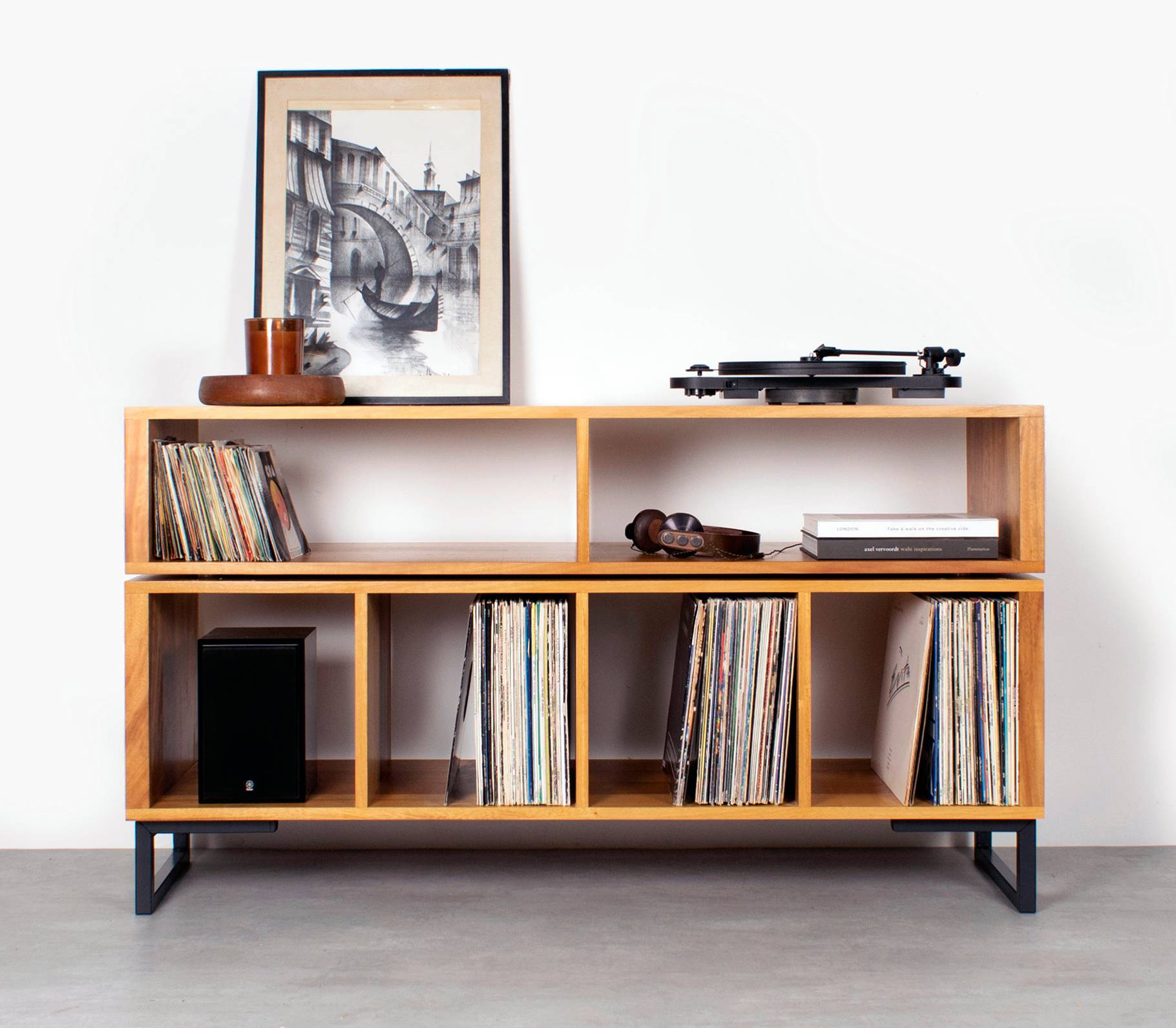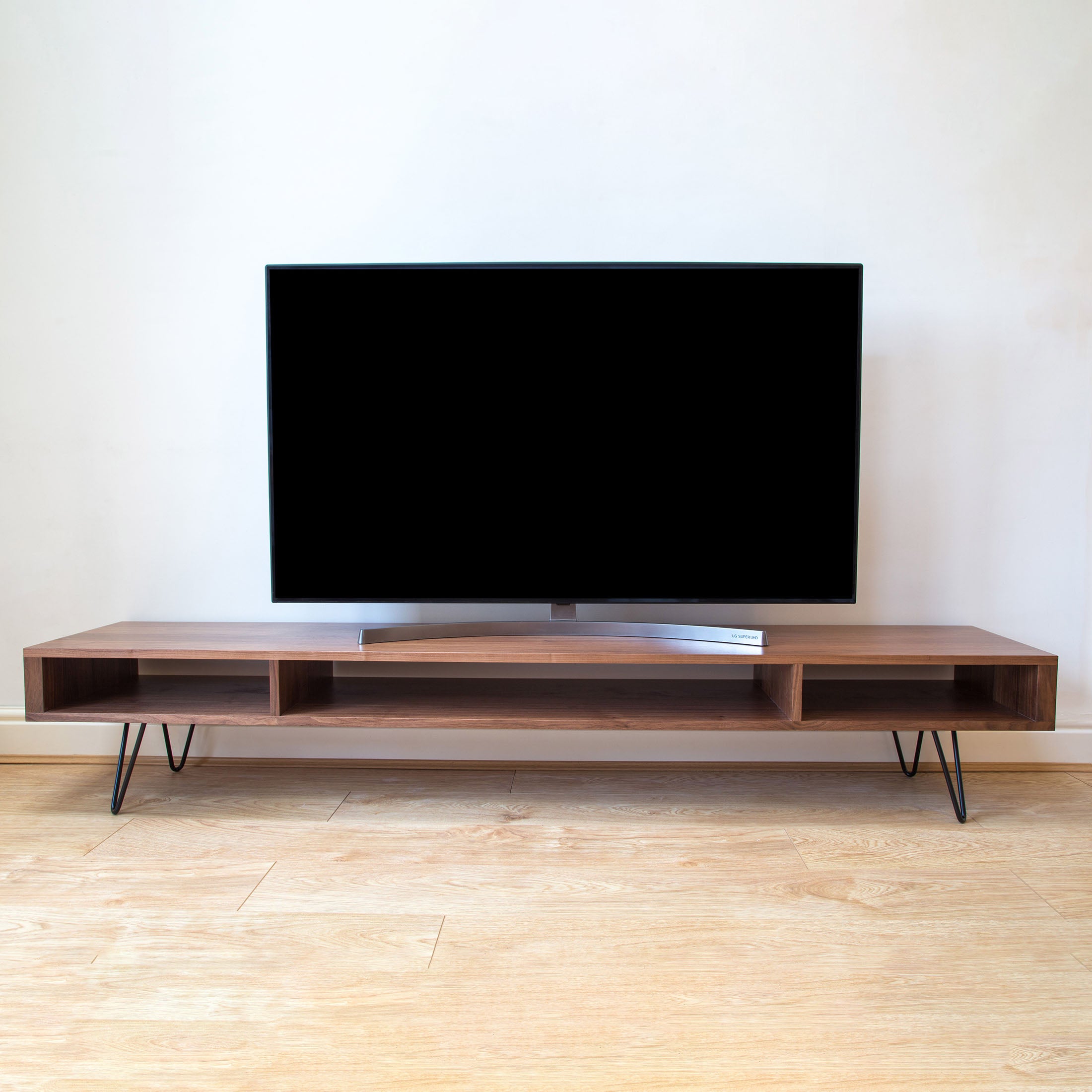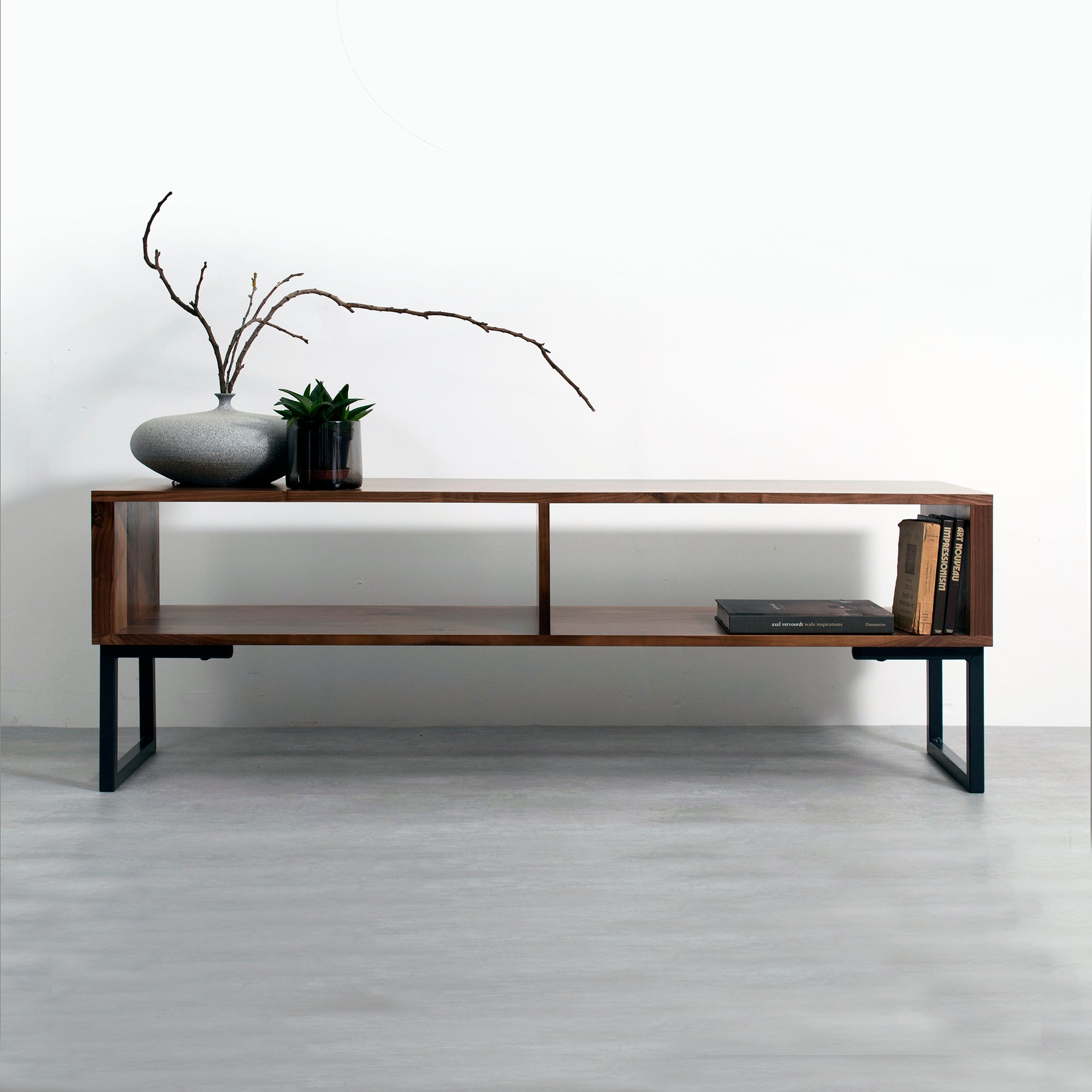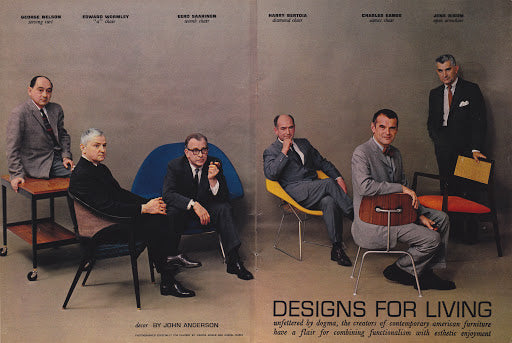
Mid-century modern: the pioneers
One of the most influential design movements, the mid-century modern revolution was brought to life by some truly iconic designers.
These pioneers helped usher in a new age, with a unique focus on the combination of form and function, to create beautiful furniture that was both practical and attainable.
Our collection of solid-wood furniture offers more than a nod to this archetypal era of design and so we thought we would take a moment to look back at the names who defined a design era like no other...
Hans Wegner

Image: Modern Times
Hans Wegner was part of the spectacular generation that created what is now referred to as ‘the Golden Age’ of modern Danish design.
He considered himself a carpenter first and a furniture designer second, and he believed that a chair must be comfortable and sturdy before it is chic. Early in his career, he described his method as “stripping the old chairs of their outer style and letting them appear in their pure construction.”
The core of Wegner’s legacy is his focus on showing the inner soul of furniture pieces through a simple and functional exterior. Wegner’s background as a cabinetmaker gave him a deep understanding of how to integrate exacting joinery techniques with exquisite form. His aesthetic was also based on a deep respect for wood and its characteristics, and a vast curiosity about other natural materials that enabled him to bring an organic, natural softness to formalistic minimalism.
Capturing the essence of modern Danish design, his iconic CH24 Wishbone Chair holds a special place in the world of modern design. When designing the CH24, Wegner chose to combine the back and armrest into a single piece. To give stability to the steam-bent top and ensure comfortable support, he developed the characteristic Y-shaped back that the Wishbone Chair is named after. In the UK, authentic Wishbone Chairs are available from Olson and Baker in a range of beautiful colours and finishes.
Marcel Breuer

Image: Elle Decor
A champion of the modern movement and protégé of Bauhaus founder Walter Gropius, Marcel Breuer is equally celebrated for his achievements in architecture and furniture. He was concerned with applying new forms and uses to recently developed technology and materials in order to create an art expressive of an industrial age.
Breuer was a student and subsequently a master carpenter at the Bauhaus in the early 1920s. His entire body of work, both architecture and furniture, embodies the driving Bauhaus objective to reconcile art and industry.
In 1925, inspired by the design of bicycle handlebars, he invented the tubular metal chair, a reduction of the classic club chair to its elemental lines and planes; his original version is known as the Wassily chair.
Charles and Ray Eames

Image: Vitra
Probably one of the most recognisable names in the world of design, Charles and Ray Eames were the husband and wife team behind the iconic Eames Lounge Chair and Ottoman.
They married in 1941 and moved to Los Angeles, where together they began experimenting with techniques for the three-dimensional moulding of plywood. The aim was to create comfortable chairs that were affordable. Their groundbreaking technique in moulding plywood led to the world’s first mass-produced design piece, the Shell Chair.
The embodiment of the inventiveness, energy and optimism at the heart of mid-century modern American design, the Eameses believed that design should be an agent of positive change.
Eileen Gray

Image: The New York Times
Known as a pioneer of the modern movement in architecture and design, Eileen Gray took up an apprenticeship in lacquer work after being one of the first women admitted to the Slade School of Fine Art in London.
With modest beginnings, critics largely ignored the young woman in her attempts to carve out a career for herself in the male-dominated field. But as the years past, Gray continued perfecting her furnishings, mixing improbable materials between antique relics and innovative design.
She is most celebrated for her ‘Le Corbusier’ and Bibendum Chairs, which feature chrome, steel tubes, and padded leather. Aside from her contributions in designing furniture, she went on to design two houses in the Alpes Maritimes. Both projects were considered at the time to be extraordinary examples of domestic architecture.
Arne Jacobsen

Image: Fritz Hansen
For more than half of the twentieth century, Arne Jacobsen’s ideas shaped the landscape of Danish design, rippling out from Scandinavia to influence architects and designers around the world.
His creative process centred on his strict consideration of detail. He was known for his impeccable sense of proportion and was praised for designs that evoke free-form sculptural qualities and structural integrity. He brought his visions to life for patrons and builders with scrupulous, hand-painted watercolours.
He is probably best known for his work in the SAS Air Terminal and the Royal Hotel Copenhagen, where he was responsible for inventing the famous Egg Chair and Swan Chair, both of which remain popular today.
Florence Knoll

Image: Utility Design
Florence Knoll displayed a strong interest in design and architecture at a young age, which led her to enrol at the Kingswood School and eventually the Cranbrook Academy of Art. During her studies, she became close friends with the Saarinen family, whose influences and recommendations gave her an opportunity to study under the likes of the esteemed Walter Gropius, Marcel Breuer and Ludwig Mies van der Rohe.
She was dedicated to functionality and organisation as is manifested in her polished, efficient furniture pieces. She produced designs that were comprehensive and practical as well as thoroughly modern. Her attention to detail and understanding of modern needs helped her to change the way that design was considered within the workplace, creating a new modern aesthetic for the 20th century.
The Florence Knoll 3-Seater Sofa, inspired by the rhythm and proportions of mid-century modern architecture, remains sought after to this day with its geometric profile elevated on tubular steel legs.
George Nelson

Image: Vitra
One of the founding fathers of American modernism, George Nelson was part of a generation of architects who revolutionised product, graphic and interior design, transforming everyday objects into works of art.
He became an expert on modernism and a vehement defender of modernist principals, deeming some colleagues mere “industrial designers” for sacrificing their art for the interests of commerce.
Nelson said that for a designer to deal creatively with human needs, "he must first make a radical, conscious break with all values he identifies as anti-human." He also declared that "total design is nothing more or less than a process of relating everything to everything."
This revolutionary mentality fed into his highly aesthetic designs but was also balanced with a sense of fun, colour and whimsy. His famous clocks – a large group of wall and table clocks created for Howard Miller - are bold and instantly recognisable timepieces, imbued with his artistic eye.
Eero Saarinen

Image: Sias Design Notebook
Son of architect Eliel Saarinen and textile artist Loja Saarinen, Eero Saarinen took to design with no difficulty. Through his work as an architect and designer, he was a prime mover in the introduction of modernism into the American mainstream.
Working mainly in the U.S., he created dramatically different structures at each turn in his career, immersing himself in various genres and concepts, making bold choices and executing them with confidence. The curvilinear forms of his furniture designs paralleled his growing interest in sculptural architectural forms.
His iconic Pedestal Collection resolved the "ugly, confusing, unrestful world" underneath tables and chairs. The collection would go on to become a defining accomplishment of modern design.
Blog posts

Vinyl Record Storage Furniture Ideas: Maximizing Space & Style
Vinyl records have made an incredible comeback, and enthusiasts understand the need for proper storage to preserve their cherished collections. With the surge in popularity, furniture designed for ...
Read more
Why and How to Press Your Records at Diggers Factory?
For independent artists, the journey to stardom can be an uphill battle. In the digital age, where streaming platforms rule the music industry, making a name for yourself as an indie artist can be ...
Read more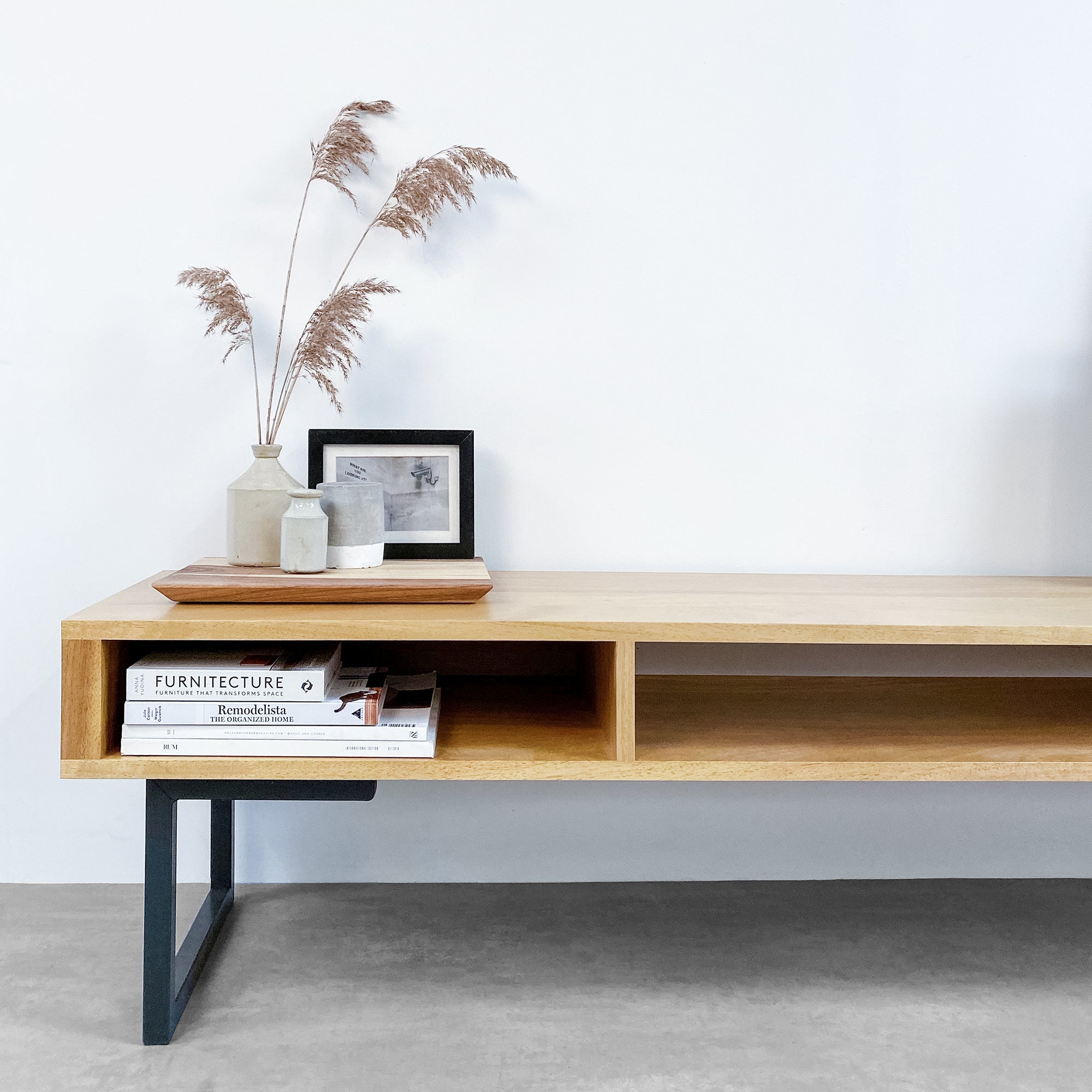
Wide TV Stand Options for the Perfect Setup
A TV stand is not just a piece of furniture; it's an integral part of your entertainment setup and something used and seen every day. While its primary purpose is to support your television, a well...
Read more
